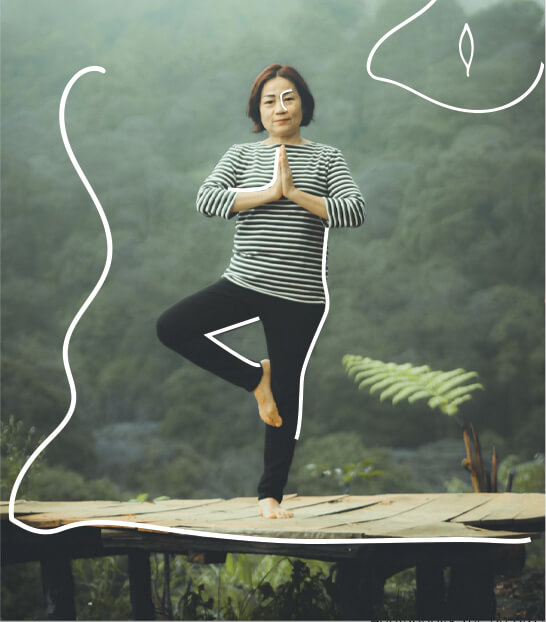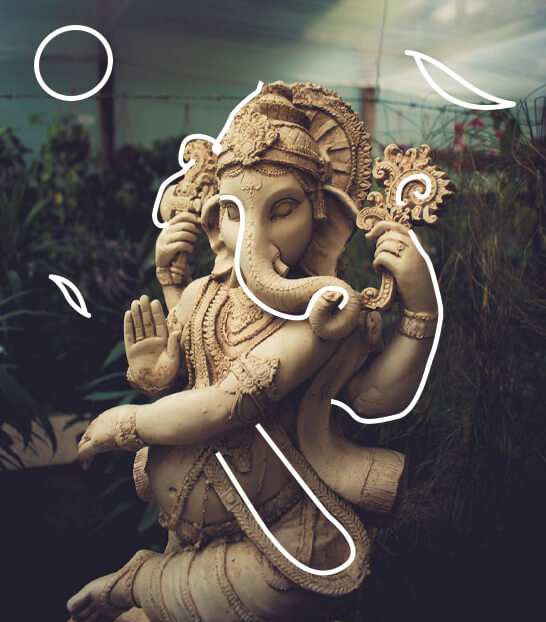Credit to my teachers: Clio Manuelian & Joan Hyman – everything below I learned from these two amazing women during their 2018 Yoga Teacher Training at Wanderlust Hollywood.
The current blog covers the philosophy of the yogic path. Next week we are going to cover how yoga stimulates the endocannabinoid system, and how both cannabinoids and yoga work in the body to create mental and physical wellness.
What is Yoga?
Much more than just a physical practice, for starters. Yoga itself means to yoke, but it also means union (with the divine? Your higher self? The best version of yourself?). In the eight limbs of yoga, physical yoga practice, or asana, is just one limb: the third limb. All together the eight limbs serve as guidelines to help one create a conscious life, to reduce misapprehension, and to correct the unhealthy tendencies which keep individuals from living with purpose, meaning, and enlightenment.

Photo by Dmitry Kotov on Unsplash
To practice yoga is to practice developing mental clarity and reducing misapprehension. Misapprehensions, mistaken beliefs or interpretations, are what the yogis define as the source of all obstacles. This is conceptualized in the four branches of Avidya which cloud our perceptions:
1. Asmita, the ego (I’m right and you’re wrong 100%),
2. Raga, making demands (I want x, y, or z – I want more – I want what I am asked to give away),
3. Dvesa, rejecting things (rejecting what we don’t understand),
4. Abhinivesa, fear (this is the most secret one of all – and it is found on many levels in everyday life).
The funny thing about the branches of Avidya? We notice them more in their absence, than in their presence.
What and how one thinks is what one cultivates. Yoga gives the practitioner tools for directed cultivation. The yogis advocate that one grows every time one, even momentarily, wakes up. What is waking up? Where are you now? Physically? Emotionally? Mentally? Do you feel awake? My yoga teachers, Clio and Joan, suggested that to wake up is to live consciously. They asked if conscious living is really bliss? Then, they offered an alternative: “Or, is conscious living, awake?”
“Happiness = fleeting, passive.
Contentment = constant, active.
Contentment is not complacent.”

Photo by Benjamin Balázs on Unsplash
THE 8 LIMBS
Patanjali – sage, author of the Yoga Sutras, and renowned “Father of Yoga” – presented the eight components, or the 8 limbs of yoga, which create the eightfold path. I know from personal experience, committing to live by the self-discipline outlined in the eightfold path will change you and your reality entirely.
The eight limbs
as edited/translated by Yogi T.K.V. Desikachar:
*each limb is building on the one it follows
The First Limb: Yama
These are the attitudes we hold towards our environment and the restraints we place on ourselves when interacting with what is outside of the self. Our attitudes show themselves to us by the way we treat the people, animals, and environment around us.
They are as follows:
1. Ahimsa: Consideration for all living things.
This is compassion for all and action from a pure place.
2. Satya: Right communication through speech, writings, gesture, and actions.
This is truth. When we are hurt, we unconsciously hurt others in acting without integrity; yet when we live in our truth? That is a truly fearless place to be.
3. Asteya: Noncovetousness, or not taking what doesn’t belong to you.
Non-possessiveness. Non-greediness. Fair trade.
4. Brahmacharya: Moderation in all our actions.
If one doesn’t scratch the chicken pox? They have a chance to heal. Moderation helps one maintain the vital life force while forming a relationship with the highest truth. This can even be applied to asana.
5. Aparigraha: Nongreediness, or the ability to accept only what is appropriate.
Take only what one needs – do not take advantage of a situation.
The Second Limb: Niyama
The partner to Yama, these are the vows taken pertaining to attitudes and actions toward the self. We want to balance and harmonize internally. We seek the middle path.
1. Saucha: Cleanliness, or keeping our bodies and our surroundings clean and neat.
Keeping both the body and the surroundings clean, this creates clarity in the mind.
2. Santosha: Contentment, or the ability to be comfortable with what we have and what we do not have.
Using modesty and being both content and comfortable with what we have. Maya Angelou has a wonderful quote for this one: “If you don’t like something, change it. If you can’t change it, change your attitude.”
3. Tapas: The removal of impurities in our physical and mental systems.
Through habits such as sleep, physical exercise, nutrition, work, and relaxation (plus CBD??), we create health. Building heat in the body = purification.
4. Svadhyaya: Study and the necessity to review and evaluate our progress.
Yogis are said to be students for life. We want to see everything in our reality as the teacher.
5. Ishvara Pranidhana: See the divine in all and lay your actions at the feet of God.
We want to lay our actions at the feet of something bigger and offer the fruits of our actions to something higher.
The Third Limb: Asana
This is the physical yoga, or the physical practice of anything.
Getting comfortable in the body is essential in preparing for
meditation and to generally be comfortable throughout life.
The body is where we live no matter where we are. It is our
ultimate home and temple.

Photo by Purnomo Capunk on Unsplash
The Fourth Limb: Pranayama
These are the breathing exercises. The breath helps us
connect with our prana and direct it by way of our own will.
This allows us to manage the energy we are holding in the
body. Additionally, breath is very connected to emotions,
therefore, the ability to control the breath translates to having
more control over the emotions and impulses, as opposed to
being controlled.
The Fifth Limb: Pratyahara
This is the restraint of the senses. Instead of taking orders
from our senses, let’s be the ones in charge. We can close our
eyes, focus our breath, and ultimately turn the sense inward to
regain control.
The Sixth Limb: Dharana
Through gaining control of the physical body and the senses,
we have cultivated the skills to now control and direct the
mind.
The Seventh Limb: Dhyana
This is absorption and connection with what we focus the mind
on. In other words, the ability to develop interaction with what
we seek to, eventually, understand.
The Eighth Limb: Samadhi
Finally, Samadhi is complete integration with what our mind is
focusing on. This means a union with the divine consciousness.
While it may seem unattainable, I don’t think it’s as far away
from us as it seems to be. I could be wrong, but I think we all
taste this when we enter the flow state. The flow state happens
when we are so involved in a task that we drop both our
conceptions of ourselves and our perceptions of time. Perhaps,
this is the bliss those new agers are talking about – following
passion and then losing yourself in that.

Photo by Jose Luis Sanchez Pereyra on Unsplash

An Article By Evie Louise
Evie Louise is a recent psychology graduate from New York University. She is a certified in International Cannabinoid Clinical Therapy. Evie sees all forms of the cannabis sativa plant as the future of psychiatry, and hopes to use it in her therapy practice as a full spectrum approach to mental health and wellness.
